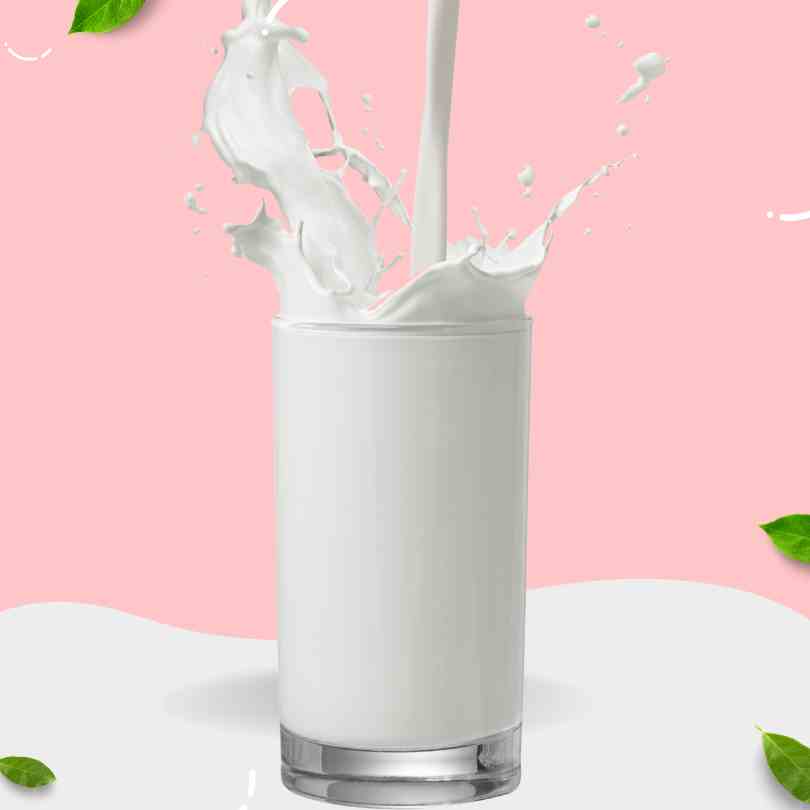
Milk, produced in the mammary glands of mammals to sustain their newborns during their first months of life, is a highly nutritious liquid (1, 2). In terms of the nutritional composition, milk is highly complex, and contains nearly every nutrient that our body needs (1). It provides a balanced mix of high-quality protein, fat, and carbohydrates, as well as many essential vitamins and minerals (3). Fort his reason, milk consumption has been a fundamental food source for humans throughout the years. Cows are among the most widely used animals for milk production, but other animals, such as goats, camels, sheep, reindeer, water buffalo, and llamas, also produce milk. Milk processing begins with collecting milk from dairy farms and continues with steps such as pasteurization, clarification, homogenization, packaging, and finally, transportation to processing facilities.
With the increasing popularity of natural, local, farm-sourced foods and the perception that raw milk is healthier, its consumption is on rise (4). The main motivation for drinking raw milk is its perceived health benefits, rather than its digestibility (5). Advocates of raw milk argue that pasteurization destroys these health benefits. However, health experts and government agencies disagree with this view and advise against consuming raw milk (4).
While milk and dairy products are important components of a healthy diet, they should always be consumed pasteurized to avoid health risks associated with potential contamination from pathogenic bacteria, such as Salmonella, E. coli, and Listeria (4, 6). Numerous epidemiological studies have shown that raw milk can be contaminated with various harmful microorganisms, some of which are linked to serious illnesses and diseases (7).
One certain way to prevent raw milk-associated foodborne illness is for consumers to avoid drinking raw milk or consuming dairy products made from it (7). Controlling pathogens in raw milk is essential, and the development of effective pre- and post-harvest control measures is necessary to reduce contamination (7).
Research examining changes in mineral and vitamin content in raw and heated milk determined that pasteurization temperatures do not significantly alter any nutrient levels (8). Pasteurization is a heat treatment process designed to make milk and dairy products safely by destroying harmful pathogens. Thanks to pasteurization, both pathogenic microorganisms and a wide range of spoilage organisms are eliminated. The standard conditions for pasteurization are as follows (9):
• At least 30 min and the temperatures between 62,8 °C and 65,6 °C (holder method)
• At least 15 s and the temperature no lower than 71,7 °C (HTST) (9).
While pasteurization enhances the safety and extends the shelf life of milk by eliminating harmful and spoilage organisms, it differs from sterilization (10). While pasteurized products typically have a shelf life extended by only a few days or weeks, sterilization, which involves higher temperatures, can extend the shelf life for many months (11).
The sterilization process of milk and milk products involves three methods; continuous sterilization, in-container sterilization in autoclaves, and ultra-high-temperature process (UHT) (12). The UHT prosess heats milk to temperatures between 135-150°C for 10 seconds before it is aseptically packaged. This treatment makes it a desirable dairy product because it has a shelf life of at least 9–12 months and does not require refrigeration (13). Traditional and conventional boiling induced a drastic reduction in vitamin levels of milk samples. In comparison to this, UHT milk preserves high rates of water-soluble B-vitamins (14).
In addition to ultra-high-temperature treatment and pasteurization, another important process in the milk industry is homogenization. Milk fat consists numerous particles, or globules, of various sizes. In raw milk, these fat globules have the disposition to float to the surface and clump together (1). The process of separating the fat globules into smaller sizes using a homogenizer, in order to prevent cream formation, is known as homogenization (16) The aim of homogenization is to improve the shelf life of milk, enhance its whiteness color and provide a richer taste. Most milk products are manufactured from homogenized milk, though cheese is generally produced from unhomogenized milk. Homogenization does not negatively impact the nutritional quality of milk (1).
In conclusion, milk is an essential and highly nutritious component of the human diet, offering a broad spectrum of nutrients needed for health. While the increasing demand for raw milk is often driven by perceptions of its superior health benefits, it is important to recognize the health risks associated with unprocessed milk. Pasteurization and other forms of heat treatment, such as ultra-high-temperature processing, play a crucial role in ensuring the safety of milk by eliminating harmful pathogens and extending shelf life without significantly altering its nutritional content. Homogenization further enhances the quality of milk by improving its consistency and taste, with no negative impact on its nutritional value. Ultimately, while the debate over raw versus pasteurized milk continues, the safety and health benefits of consuming pasteurized dairy products cannot be overstated, making it the recommended choice for maintaining public health.
Author Kubra Haktan
References
1. Arnarson, A. (2019, march 25). Milk 101: Nutrition Facts and Health Effects. Healthline: https://www.healthline.com/nutrition/foods/milk
2. USDA, (2012, June 29). General Specifications for Dairy Plants Approved for USDA Inspection and Grading Service Effective. https://www.ams.usda.gov/sites/default/files/media/General%20Specifications%20for%20Dairy%20Plants%20Approved%20for%20USDA%20Inspection%20and%20Grading%20Service.pdf
3. Katherine Marengo LDN, R. (2020, December 1). Boiled Milk: Nutrients, Benefits, and How to Make It. Healthline: https://www.healthline.com/nutrition/boiled-milk
4. Caroline Hill. (2018, June 30). Raw Milk: Do Its Benefits Outweigh the Dangers? Healthline: https://www.healthline.com/nutrition/drinking-raw-milk
5. Mullin, G. E., Belkoff, S. M., & Box, R. (2014). Survey to Determine Why People Drink Raw Milk. Global Advances in Health and Medicine, 19-24. doi:https://doi.org/10.7453/gahmj.2014.041
6. Angulo, F. J., LeJeune, J. T., & Rajala-Schultz, P. J. (2019, January 1). Unpasteurized Milk: A Continued Public Health Threat. Clinical Infectious Diseases(Volume 48), 93-100. doi:https://doi.org/10.1086/595007
7. Oliver, S. P., Boor, K. J., Murphy, S. C., & Murinda, a. S. (2009, September 8). Food Safety Hazards Associated with Consumption of Raw Milk. Foodborne Pathogens and Disease., 793-806. doi:10.1089/fpd.2009.0302
8. Marengo, K. (2020, December 1). Boiled Milk: Nutrients, Benefits, and How to Make It. Healthline: https://www.healthline.com/nutrition/boiled-milk
9. Özer, B., & Yaman, H. (2014). Milk and Milk Products: Microbiology of Liquid Milk. C. T. Batt, & T. Batt, Encyclopedia of Food Microbiology (s. 721–727). doi:10.1016/B978-0-12-384730-0.00219-6
10. Lejeune, J. T., & Rajala-Schultz, P. J. (2009, January). Unpasteurized Milk: A Continued Public Health Threat. Clinical Infectious Diseases, 93-100. doi:10.1086/595007
11. P.J.Fellows. (2017). Pasteurisation. Food Processing Technology (Fourth Edition) (s. 563-580). doi:https://doi.org/10.1016/B978-0-08-100522-4.00011-0
12. Jörg Hinrichs, C. W. (2019). Sterilization of Milk and Other Products. Food Science (s. 714-724). University of Hohenheim, Stuttgart, German.
13. Marije Akkermana, L. B. (2021). Relationship between casein micelle size, protein composition and stability of UHT milk. International Dairy Journal.
14. Asadullah, Khair-un-nisa, OM, T., SA, A., K, J., & A., B. (2010). Study to evaluate the impact of heat treatment on water soluble vitamins in milk. The Journal of the Pakistan Medical Association, 60(11), 909-912.
15. Arnarson, A. (2019, March 25). Milk 101: Nutrition Facts and Health Effects. Healthline: https://www.healthline.com/nutrition/foods/milk#processing
16. S.K. Dash. (2007). HOMOGENIZATION OF MILK. M. Kutz içinde, Dairy and Food Engineering.http://ouat.nic.in/sites/default/files/7-homogenisation_of_milk_dairy_and_food_engineering.pdf
17. Milk Processing I Advance technology in milk processing plants. (2016, April 6). ABLTechnology: https://abltechnology.wordpress.com/category/milk-processing/
18. Milk Processing I How Milk Processing Plants Work? (2016, March 15). ABLTechnology: https://abltechnology.wordpress.com/category/milk-processing/
